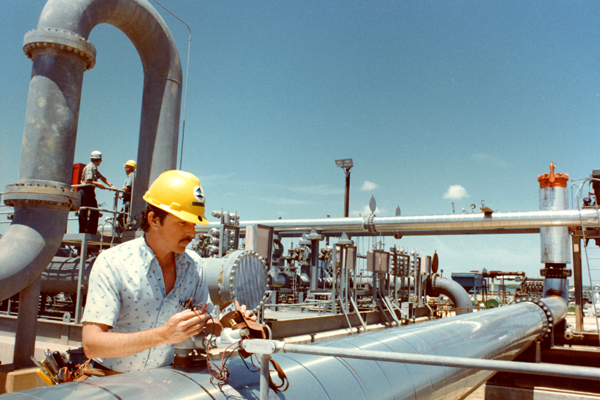What Is the Strategic Petroleum Reserve, and How Much Oil Is In It?

Political and economic unrest in the Arab world have sent gas prices skyrocketing in the United States in recent weeks, and some lawmakers are ready to tap into the country's Strategic Petroleum Reserve. What is that, and how much oil is in it?
The reserve was formed following an energy crisis of a different era. In October 1973, the Organization of Arab and Petroleum Exporting Countries (OAPEC) shut off oil supplies in response to United States support of the Israeli military during the Yom Kippur War. The oil embargo, which lasted until the following March, caused a global energy and economic crisis. To prevent such a situation from arising again, the U.S. government created the Strategic Petroleum Reserve (SPR) in 1975. Several other countries also created oil reserves, but the American stockpile was and remains the biggest.
As of March 7, the SPR consists of 726.5 million barrels of crude oil stored in underground caverns at four secure locations along the Gulf Coast, a spokesperson at the U.S. Department of Energy told Life's Little Mysteries, a sister site to LiveScience. The biggest reserve site is Bryan Mound, near Freeport, Texas. There, 254 million barrels fill 20 manmade caverns that have been hollowed out beneath salt domes a few thousand feet underground. The other three reserve sites are Big Hill in Winnie, Texas, West Hackberry in Lake Charles, LA, and Bayou Chocktaw in Baton Rouge, LA.
[INFOGRAPHIC: America's Emergency Oil Plan]
The oil is stored in salt caverns because it's cheaper, costing just $3.50 per barrel compared to $18 per barrel for storage in above-ground tanks. The caverns themselves were carved out by drilling a 2,000 to 4,000-foot well and injecting fresh water. The water dissolved the salt, the briny mix was pumped out, and oil was pumped into the cavity left behind. The salt of the cavern walls does not react with the oil, and if cracks form in them, they tend to heal naturally due to the immense pressures so deep inside the planet.
Currently, the reserve sites are all at maximum capacity. In the past, oil was added to them either by congressional budgeting directives or with "royalty in kind," wherein companies drilled for oil on U.S. government property and paid for the right to do so by contributing to the SPR supply.
A Presidential order is required to make an oil "drawdown," or removal, from the reserve in response to a severe energy supply interruption. Small quantities may also be temporarily loaned to oil companies in the instance of a shipping channel blockage.
Get the world’s most fascinating discoveries delivered straight to your inbox.
To date, there have been two major drawdowns of SPR oil. From 1990 to 1991, during Operation Desert Storm, 38 million reserve barrels were put on the market to boost the global supply. In 2005, 21 million SPR barrels were loaned or sold after Hurricane Katrina devastated refineries in the Gulf of Mexico, curtailing the national supply.
If a total oil embargo were to occur, and the reserve quantity could magically flow into the supply chain immediately, there would be enough there to fuel the United States for 39 days. But the SPR oil can only be pumped out at a rate of 4.4 million barrels per day — not fast enough to power the country at its current rate of consumption — and so Americans would have to conserve. A DOE spokesperson said that the reserve supply would be stretched to last for 75 days.
This article was provided by Life's Little Mysteries, a sister site to LiveScience. Follow Natalie Wolchover on Twitter @nattyover
Natalie Wolchover was a staff writer for Live Science from 2010 to 2012 and is currently a senior physics writer and editor for Quanta Magazine. She holds a bachelor's degree in physics from Tufts University and has studied physics at the University of California, Berkeley. Along with the staff of Quanta, Wolchover won the 2022 Pulitzer Prize for explanatory writing for her work on the building of the James Webb Space Telescope. Her work has also appeared in the The Best American Science and Nature Writing and The Best Writing on Mathematics, Nature, The New Yorker and Popular Science. She was the 2016 winner of the Evert Clark/Seth Payne Award, an annual prize for young science journalists, as well as the winner of the 2017 Science Communication Award for the American Institute of Physics.



